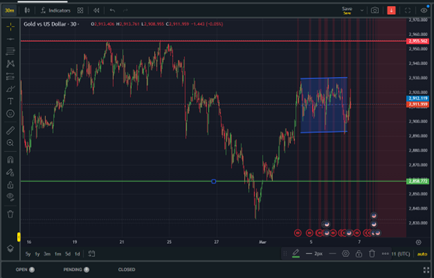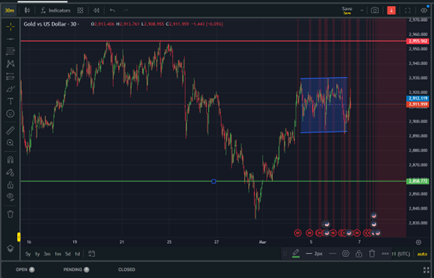Gold prices have gone up over 11% so far this year and are now selling at about $2,921.19 an ounce as of March 6, 2025. This rise shows that gold will always be a safe investment when the world economy is getting less stable, especially because of recent trade disputes and changes in monetary policy.
ECB's Decision on Interest Rates and What It Means
Because the economy is slowing down and inflation is low, the European Central Bank (ECB) cut its base savings rate by a quarter point, from 2.75% to 2.5%. This choice is meant to boost borrowing and investment in the eurozone, which has been stagnant for a while now.
At the news meeting that followed, ECB President Christine Lagarde said that the current stance on monetary policy was "meaningfully less restrictive." This is different from what the ECB said in January, when they said policy was "restrictive." It looks like a more flexible method is needed to help the economy grow after the change.
The ECB's dovish tone and rate cut have an effect on the price of gold. Lower interest rates usually make keeping assets that don't earn money, like gold, more appealing to buyers by lowering the potential cost of doing so. Also, this kind of monetary easing can cause currencies to lose value. In fact, after the ECB made its announcement, the value of the euro went up. As gold tends to move against the dollar, a higher euro can put pressure on the U.S. dollar, which could make gold prices go up even more.
U.S. Weekly Jobless Claims and How the Market Reacted
The most recent information on weekly jobless claims in the U.S. showed a drop to 221,000, from 242,000 the week before and below the 234,000 that was expected. A drop in jobless claims usually means that the job market is getting stronger, but the effect on gold prices has been more complicated. The news that was better than expected helped the U.S. dollar get a little stronger, which can make gold prices go down. But worries about trade wars and changes in monetary policy around the world have kept gold prices pretty high.
Looking Forward to U.S. Nonfarm Payrolls (NFP) Data
Investors can't wait for Friday, when the U.S. Nonfarm Payrolls (NFP) report is set to come out. This comes after the poor ADP employment report, which showed that job growth in the private sector slowed down a lot. Most people think that the NFP will show an increase of 160,000 jobs in February.
Should the NFP data fall short of forecasts, it could strengthen worries about a cooling U.S. job market, possibly causing the Federal Reserve to rethink its monetary tightening track. If this happened, gold prices would probably go up because lower interest rates make investments that earn money less appealing than gold.
Update on U.S. Tariff Developments
Recently, the White House said that cars coming from Canada and Mexico would not be subject to taxes for one month. This short-term comfort has given the market a small boost, which has caused U.S. stocks to rise again. But the idea of taxes being applied to both sides in the near future looms large, which suggests that market instability may continue. Changes in trade policy make gold even more valuable to buyers because it protects against political and economic uncertainty.
Technical Analysis
The below chart shows that the price has broken out of a channel for a brief moment but the price is back within that range. This means traders are still very much apprehensive about placing bigger bets ahead of the US NFP data. The chart below shows important price levels.

Gold trading: Chart by Exness trading app
In conclusion
As trade issues, changes in monetary policy, and mixed economic data continue to affect each other, the gold price environment remains complicated. Gold is supported by the ECB's easing measures and possible changes in the way the U.S. job market works. However, ongoing changes in trade policies and their larger economic effects are still very important. Because of this, buyers who are thinking about adding gold to their investments should keep an eye on these changing factors.
